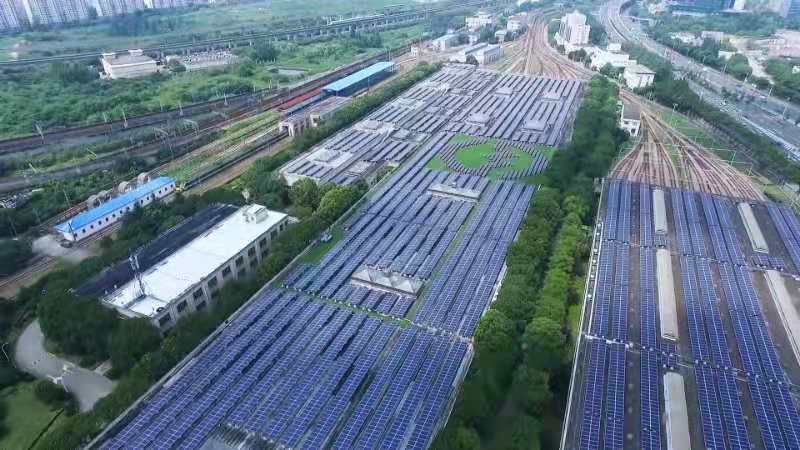This could be the most important news of the year; the earlier Russian BN-800 could be the most important news of the century. If there are no serious problems, the future of humanity looks suddenly much brighter.
The reason is, fast neutron breeder reactors can burn Uranium 238, which is about 140 times more abundant than U-235. There should be enough U-238 to last the world for thousands of years. Additionally, there is enough U-238 dissolved in the sea to last millions of years -- this should buy us plenty of time to harness fusion.
Well fast breeder is not new Many countries has the experimental fast breeder. Japan has one for decades but recently mothballed There is problem with heat transport carrier They don't use water I believe instead they use liquid sodium which very corrosive
Liquid sodium is used as a coolant in fast breeder reactors on account of its excellent heat transfer properties. It must, however, be in the pure form to be compatible with structural materials. Techniques for its purification to nuclear grade and its characterization had to be developed in our laboratory before we could embark on an R&D programme.
Corrosion of structural materials in the sodium environment depends on the oxygen content of sodium. In order to understand the mechanism of this corrosion, one must have a good grasp of the thermochemistry of the ternary systems, Na-M-O, where M stands for the alloying constitutents of stainless steels. The phase diagrams of most of these systems were established in our laboratory. A specially designed sodium loop is used in the study of corrosion, activity transport and kinetics of sodium-water reaction.
Japan wastes billions
The latest setback was the
of the Japanese government at an extraordinary Cabinet meeting on September 21 to abandon plans to restart the Monju fast breeder reactor.
Monju reached criticality in 1994 but was shut down in December 1995 after a sodium coolant leak and fire. The reactor didn’t restart until May 2010, and it was shut down again three months later after a fuel handling machine was accidentally dropped in the reactor during a refuelling outage. In November 2012, it was revealed that Japan Atomic Energy Agency had failed to conduct regular inspections of almost 10,000 out of a total 39,000 pieces of equipment at Monju, including safety-critical equipment.
In November 2015, the Nuclear Regulation Authority declared that the Japan Atomic Energy Agency was “not qualified as an entity to safely operate” Monju. Education minister Hirokazu Matsuno
on 21 September 2016 that attempts to find an alternative operator have been unsuccessful.
Japan has wasted around US$37 billion on Monju (US$15bn) and Rokkasho (US$22bn) and plans to continue to throw good money after bad
The government has already
1.2 trillion yen (US$12bn) on Monju. The government
that it would cost another 600 billion yen (US$6bn) to restart Monju and keep it operating for another 10 years.
Decommissioning also has a hefty price-tag ‒ far more than for conventional light-water reactors. According to a 2012
by the Japan Atomic Energy Agency, decommissioning Monju will cost an estimated 300 billion yen (US$3bn).
So Japan will have wasted over US$15 billion on the Monju fiasco. Perhaps those responsible will argue that the figure pales into insignificance compared to the estimated long-term costs of around
arising from the Fukushima disaster.
Allison MacFarlane, former chair of the US Nuclear Regulatory Commission, recently made this sarcastic
of fast reactor technology: “These turn out to be very expensive technologies to build. Many countries have tried over and over. What is truly impressive is that these many governments continue to fund a demonstrably failed technology.”
India has a track record of making absurd projections for both fast reactors and light-water reactors ‒ and failing to meet those targets by orders of magnitude
Japan neatly illustrates MacFarlane’s bemusement. Despite the Monju fiasco, the Japanese government wants to stay involved in the fast reactor game, either by restarting the Joyo experimental fast reactor (
since 2007 due to damage to reactor core components) or pursuing joint research with France.
Why would Japan continue its involvement in fast reactors? Most likely, the government has no interest in fast reactors
per se, but giving up would make it more difficult to justify continuing with the partially-built
. Providing plutonium fuel for fast reactors was one of the main justifications for Rokkasho.
Rokkasho has been an even more expensive white elephant than Monju. Its scheduled completion in 1997 has been delayed by more than 20 times due to technical glitches and other problems, and its
is now estimated at 2.2 trillion yen (US$22bn) ‒ three times the original estimate.
Japan has wasted around US$37 billion on Monju (US$15bn) and Rokkasho (US$22bn) and plans to continue to throw good money after bad. According to the
, if Rokkasho operates it is expected to increase the electricity bills of Japan’s ratepayers by about US$100 billion over the next 40 years.
India’s failed program
India’s fast reactor program has also been a failure. The budget for the Fast Breeder Test Reactor (FBTR) was approved in 1971 but the reactor was delayed repeatedly, attaining first criticality in 1985. It took until 1997 for the FBTR to start supplying a small amount of electricity to the grid. The FBTR’s operations have been marred by
.
Preliminary design work for a larger Prototype Fast Breeder Reactor (PFBR) began in 1985, expenditures on the reactor began in 1987/88 and construction began in 2004 ‒ but the reactor still hasn’t
. Construction has taken more than twice the expected period. In July 2016, the Indian government announced yet another delay, and there is scepticism that the scheduled start-up in March 2017 will be realised. The PFBR’s
has gone up by 62%.
“It’s very likely that the current economic crisis, the deepest in history since the USSR collapsed, will axe most of the new reactors”
India’s Department of Atomic Energy (DAE) has for decades projected the construction of hundreds of fast reactors ‒ for example a 2004 DAE document projected 262.5 gigawatts (GW) of fast reactor capacity by 2050. But India has a track record of making absurd projections for both fast reactors and light-water reactors ‒ and
to meet those targets by orders of magnitude.
Princeton academic M.V. Ramana
: “Breeder reactors have always underpinned the DAE’s claims about generating large quantities of electricity. Today, more than six decades after the grand plans for growth were first announced, that promise is yet to be fulfilled. The latest announcement about the delay in the PFBR is yet another reminder that breeder reactors in India, like elsewhere, are best regarded as a failed technology and that it is time to give up on them.”
Russia’s snail-paced program
Russia’s fast reactor program is the only one that could be described as anything other than a failure. But it hasn’t been a roaring success either.




